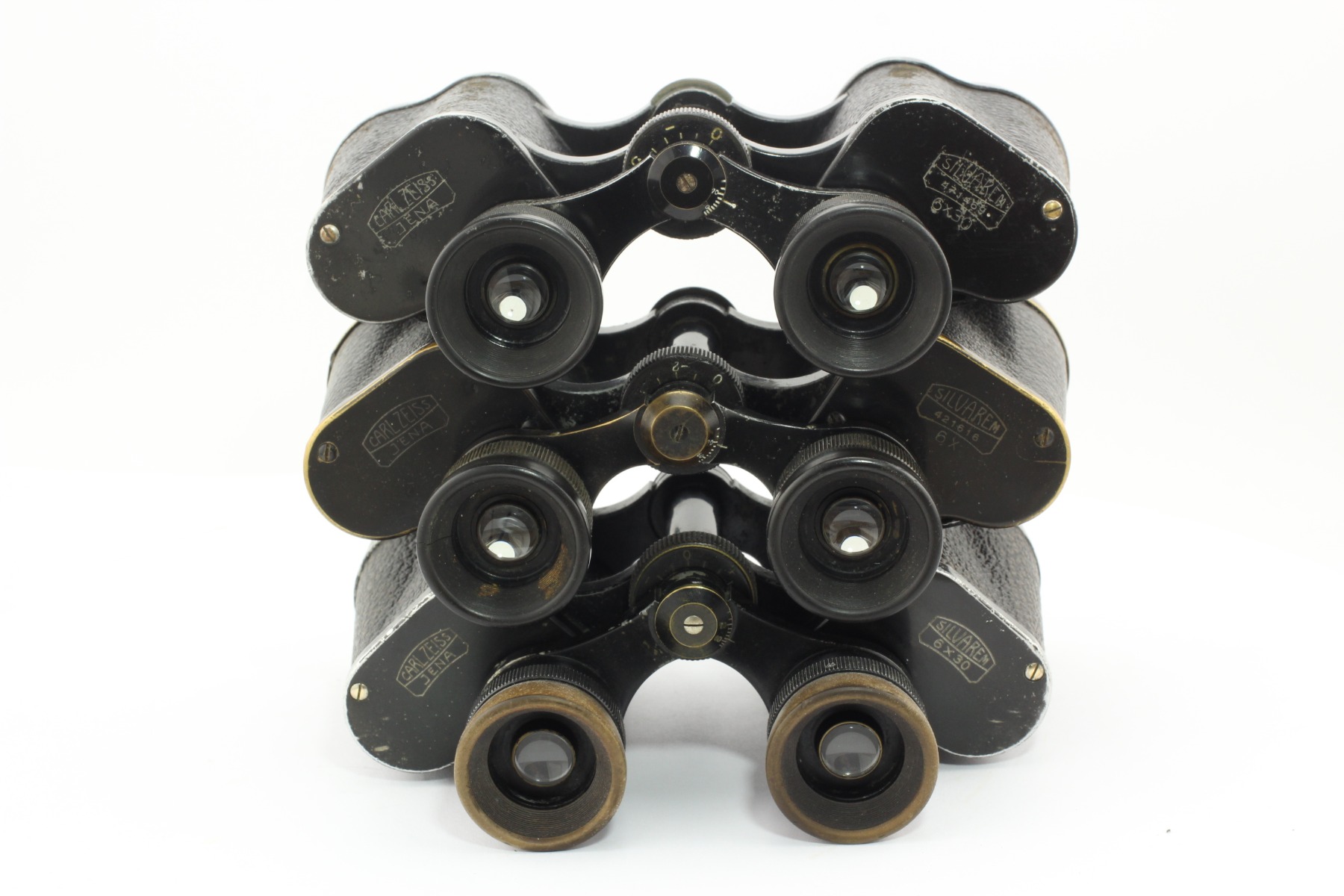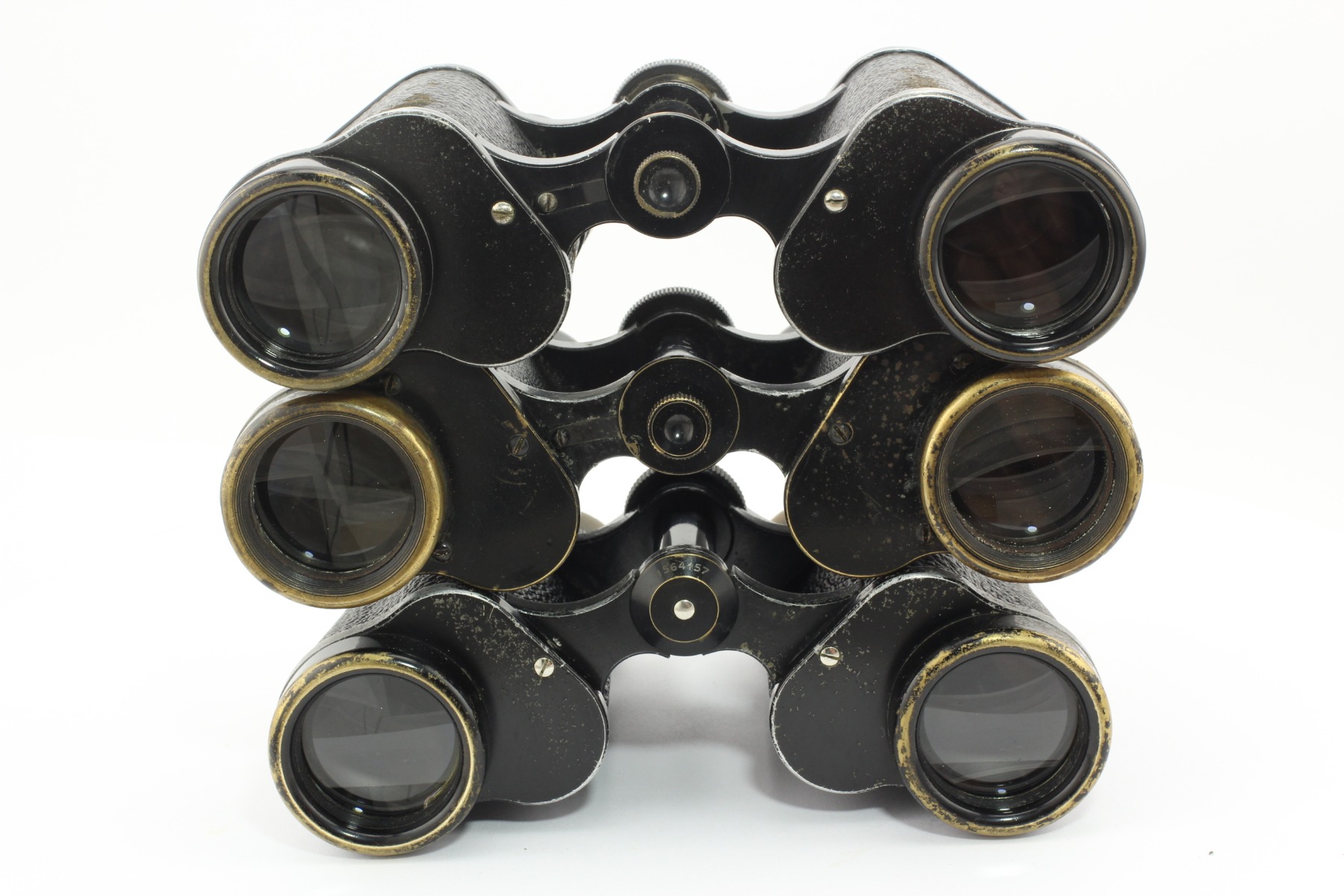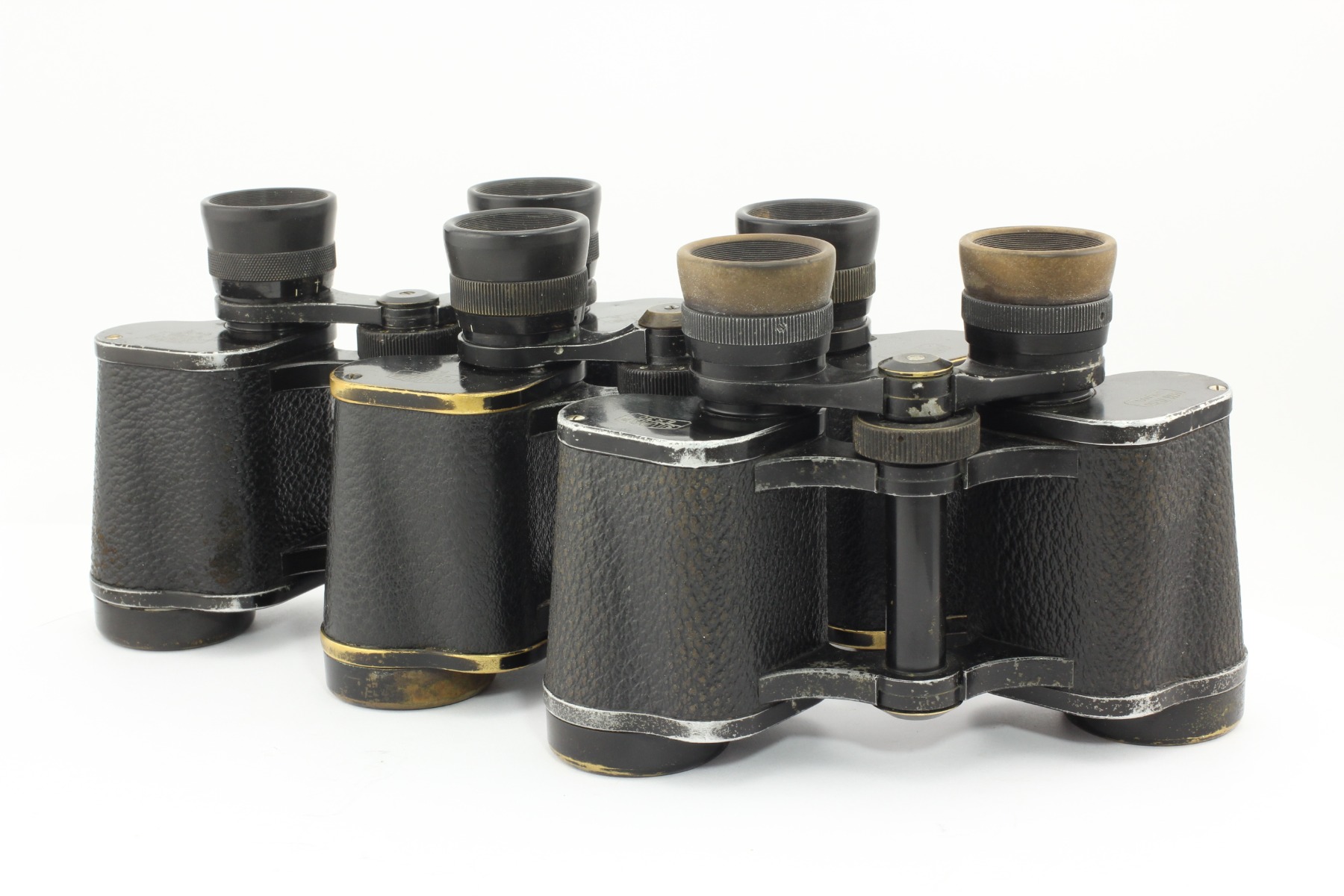Magnification: 6x
Aperture (objective diameter): 30 mm
Field of view: 8.4°
Exit pupil diameter: 5 mm
Visible field of view (eyepiece FOV): 50°
The closest focusing distance: 4.5 m
Width: 16.7 cm
Height: 11.8 cm
Weight: 710 g
Production date: 1910.
Binoculars Carl Zeiss Jena Silvarem 6x
Binoculars with central focusing appeared on the market in the middle of the 19th century. Carl Zeiss engineers were not in a hurry with such devices’ production, since they considered them less reliable and protected from dust and dirt. First prototypes of these binoculars were produced in Jena back in 1907, but only in 1909/1910 Carl Zeiss was forced to begin mass production of the devices of such design under the competitors’ pressure and because of the demand. First models of central-focus binoculars appeared in T136 catalog in 1910–those were Teletur 6x15, Telexem 6x21, Telactem 8x24 and Silvarem 6x30. Subsequently, all civilian Carl Zeiss binoculars with central focusing had an “...em” ending in their designations.
The presented rare specimen belongs to the first design version of this model (it was produced during a short period of time from 1909 to 1911) and it has the following features:
- the binocular’s design is characterized by short carcass and long lens frames of the double-ring type with leather coating;
- the prism covers are fastened with the help of three screws;
- there is no interpupillary distance scale on the central focusing wheel;
- the central focusing ocular bridge shoulders have fork structure (see photo), they have a large thickening closer to the hinges and they are made of different materials: the left shoulder is made of brass, the right shoulder is made of aluminum alloy;
- the eyepieces front lens’s diameter is equal to 12.7 mm, the binocular’s field of view is equal to 8.4°
The binocular’s design changes starting from 1910/11: the carcass height is increased, the lens frames are reduced in length (the two-ring type design remains), and starting from 1913/14 there appear lenses with rounded objective covers. The binocular’s field of view also increases a bit (up to 8.5°), the eyepiece’s front lens decreases up to 11.5 mm), the central focusing bridge shoulders’ design changes as well (its thickness decreases - see photo).



The binocular’s “civilian” application is proved by the central focusing mechanism (military models were never produced with it) and the central hinge fixture’s (clamp’s) small diameter (see photo), which has a hole for a knob (included to binoculars delivery kit), with the help of which the hinge could have been finally fixed depending on the observer’s interpupillary distance. The interpupillary distances scale is indicated on the upper hinge disk. The right eyepiece has its own focusing mechanism with a diopter scale.
The base diameter of this device’s eyepieces is equal to 24.5 mm and the top prismatic cap width is equal to 52 mm (see photo). The eyepieces have a longitudinal knurling. The binocular’s case height (including upper prism cover) is equal to 77 mm; the binocular’s height without lens frame is equal to 56.5 mm.
There are inscriptions “Carl Zeiss Jenna” on the left prism cover. There is also an inscription “Silvarem 200268 6x” on the right prism cover. The inscription is made in block letters with the help of silver solder on the background of Carl Zeiss Tessar photo lens schematic image.
The binocular’s coffer has features specific to that period models (see Hans T. Seeger. ZeissHandfernlaser 1919-1946, Modelle-Merkmale-Mythos, pp. 607-627): short top cover fastening to the carcass (the “civilian” binocular’s model feature), the upper carrying handle remains, the “Carl Zeiss Jena” logo.
The device’s serial number is 200268 and it was manufactured in 1910 presumably as a 200 pieces batch.
The Silvamar 6x binocular model with a similar design but with separate focusing can be checked by the following link: https://binocollection.com/catalog/binoculars-carl-zeiss-jena-silvamar-6x.html
The presented rare specimen belongs to the first design version of this model (it was produced during a short period of time from 1909 to 1911) and it has the following features:
- the binocular’s design is characterized by short carcass and long lens frames of the double-ring type with leather coating;
- the prism covers are fastened with the help of three screws;
- there is no interpupillary distance scale on the central focusing wheel;
- the central focusing ocular bridge shoulders have fork structure (see photo), they have a large thickening closer to the hinges and they are made of different materials: the left shoulder is made of brass, the right shoulder is made of aluminum alloy;
- the eyepieces front lens’s diameter is equal to 12.7 mm, the binocular’s field of view is equal to 8.4°
The binocular’s design changes starting from 1910/11: the carcass height is increased, the lens frames are reduced in length (the two-ring type design remains), and starting from 1913/14 there appear lenses with rounded objective covers. The binocular’s field of view also increases a bit (up to 8.5°), the eyepiece’s front lens decreases up to 11.5 mm), the central focusing bridge shoulders’ design changes as well (its thickness decreases - see photo).
The binocular’s “civilian” application is proved by the central focusing mechanism (military models were never produced with it) and the central hinge fixture’s (clamp’s) small diameter (see photo), which has a hole for a knob (included to binoculars delivery kit), with the help of which the hinge could have been finally fixed depending on the observer’s interpupillary distance. The interpupillary distances scale is indicated on the upper hinge disk. The right eyepiece has its own focusing mechanism with a diopter scale.
The base diameter of this device’s eyepieces is equal to 24.5 mm and the top prismatic cap width is equal to 52 mm (see photo). The eyepieces have a longitudinal knurling. The binocular’s case height (including upper prism cover) is equal to 77 mm; the binocular’s height without lens frame is equal to 56.5 mm.
There are inscriptions “Carl Zeiss Jenna” on the left prism cover. There is also an inscription “Silvarem 200268 6x” on the right prism cover. The inscription is made in block letters with the help of silver solder on the background of Carl Zeiss Tessar photo lens schematic image.
The binocular’s coffer has features specific to that period models (see Hans T. Seeger. ZeissHandfernlaser 1919-1946, Modelle-Merkmale-Mythos, pp. 607-627): short top cover fastening to the carcass (the “civilian” binocular’s model feature), the upper carrying handle remains, the “Carl Zeiss Jena” logo.
The device’s serial number is 200268 and it was manufactured in 1910 presumably as a 200 pieces batch.
The Silvamar 6x binocular model with a similar design but with separate focusing can be checked by the following link: https://binocollection.com/catalog/binoculars-carl-zeiss-jena-silvamar-6x.html
